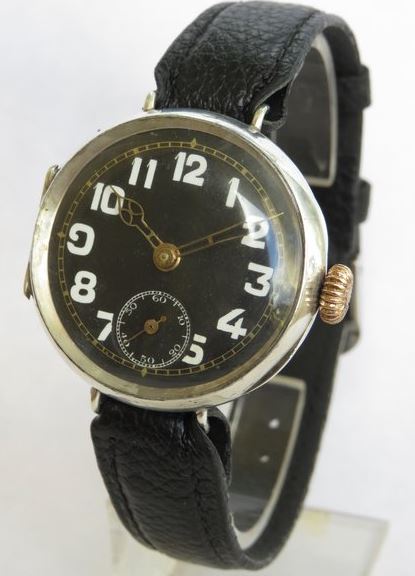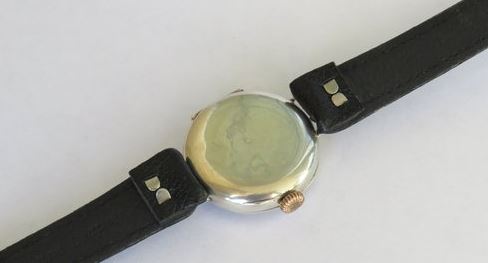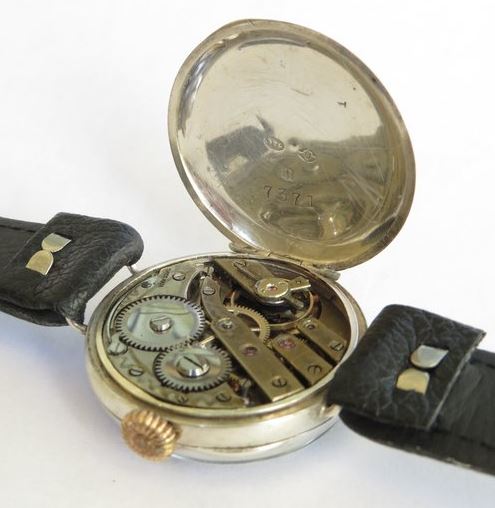Last updated on July 3, 2024
In this post, we take a look at an extremely tempting antique trench watch produced by the ébauche manufacturer, Adolph Schild. It looks in superb condition and has a stunning black dial. It would make a very presentable dress watch for the modern gentleman. Actually, considering its small size it would probably make a presentable unisex dress watch suitable for anyone.
Collection
I’m not sure if I have mentioned it in any of my previous posts, but I fund my watch collection in a particular way. A few years ago, when I was cleaning out my loft, I discovered an antique tea caddy (14mm x 13mm x 10mm) that dated from World War 1. Every day, I empty my pocket of coins into the tea caddy. After two or three months the tea caddy is full and I cash in the coins at my local bank. The amount varies, but typically I get £400+. It is possibly a false economy, but to me, it provides me with guilt-free money to indulge in my hobby. For some of my modern watches, I have needed to fill the tea caddy several times before I could make a purchase. However, I find that the £400 is normally more than enough to fund the next purchase in my antique watch collection.
This watch is tempting because of the condition and timekeeping, but most importantly the stunning black dial. My dilemma is, that I am trying to diversify my collection and I already own a trench watch that may have been made by Adolph Schild. I am trying to make sure I get something different each time I add to my antique watch collection.

Case
The watch measures 33mm in diameter excluding the onion winding crown and the fixed wire lugs. The case is silver and there are hallmarks inside the hinged case back for London 1915. The case is in good condition for such an early piece, with a little unevenness to the back but nothing too serious. From the magnified pictures I can see on the seller’s website, there is absolutely nothing to worry about. It is a well-preserved timepiece considering it was made in 1915.

The lens is in good condition. Apparently, the black dial has two chips to the edge but these are mostly covered by the hinged bezel. I’ve examined the pictures closely and I cannot see the chips, so I doubt if they would be readily noticeable to the naked eye. It has cathedral hands that are missing the luminous paint that would have once made them visible in the dark. This is not unusual, the radioactive paint would have flaked over the years and fallen away. Once society recognised the danger of radium, the radium paint would have been carefully removed.
Movement
The movement has been identified as by Adolph Schild, a noted ébauche manufacturer from the period. In the photographs, the movement looks clean and free of damage or corrosion. According to the website it is working to within two to three minutes of accuracy a day, which is perfectly acceptable for an antique watch.

Black dial
The black dial is interesting. My other trench watches have a white dial. Apparently, as the war progressed the soldiers in the trenches realised that the black dial and white indicators gave a far greater contrast than a white dial with black hands. The trench watch was a relatively new piece of technology during the time of World War 1, so it would have undergone some experimentation during the war. After the war, most military watches adopted the black dial.
As tempted as I am to add this timepiece to my antique watch collection, I am going to hold back. At the moment I am really looking for an antique hunter pocket watch and if I buy this trench watch I’ll have to wait until that tea caddy fills again. I must stick to my priorities.
